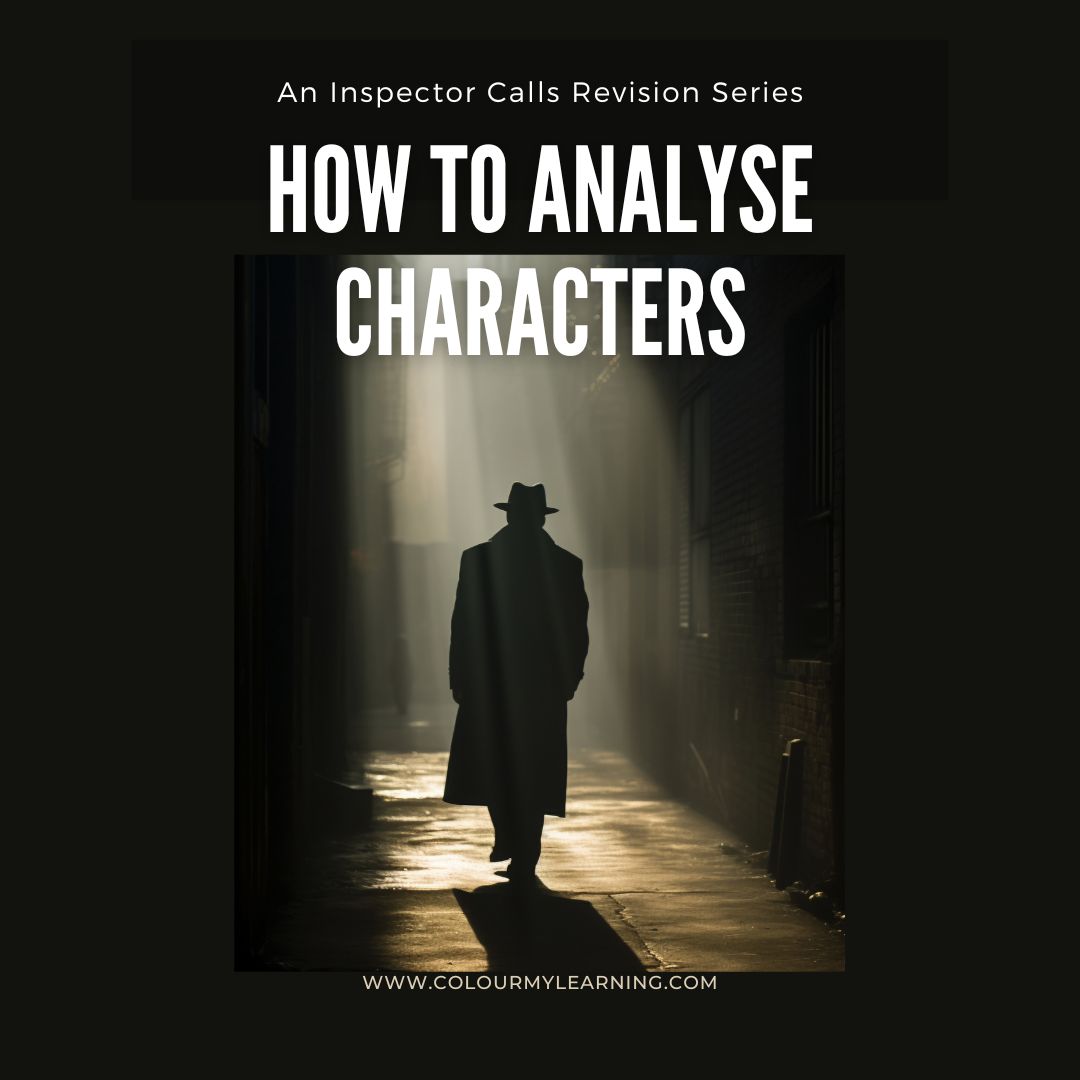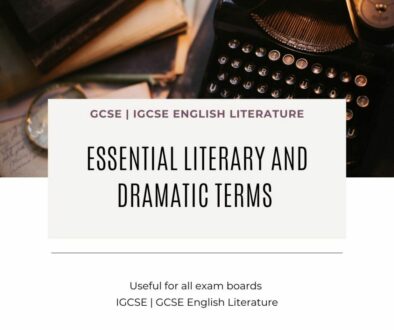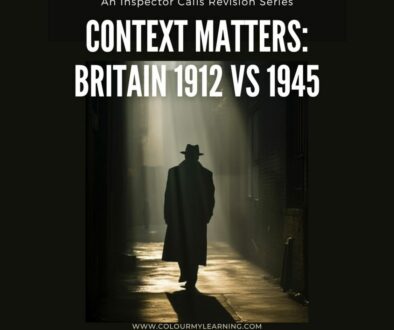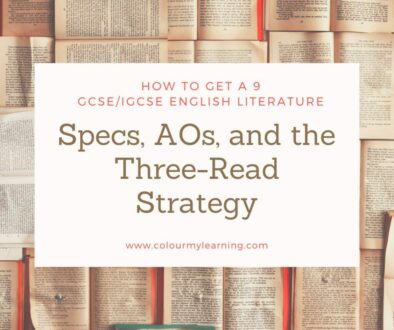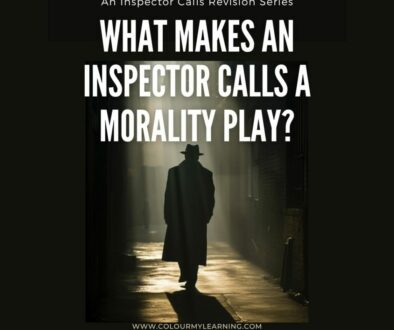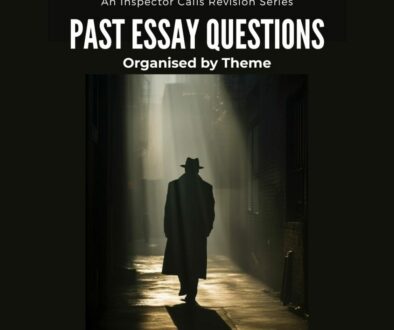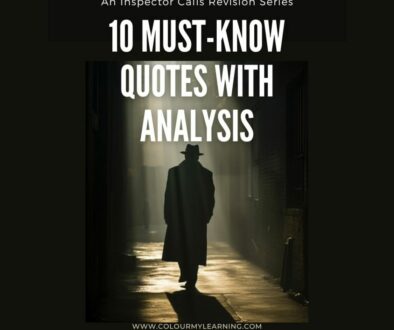How to Analyse Characters in An Inspector Calls: IGCSE Student Guide
Whether you’re revising for your Edexcel IGCSE or another English Literature exam board, knowing the characters in An Inspector Calls — and understanding how Priestley uses them — is key to hitting the assessment objectives. Most essay questions will ask you to write about a character, a theme, or both. To do this well, you need more than just knowledge of what the characters say and do. You need to be able to explain why Priestley presents them that way, and how he uses dramatic techniques to shape meaning and influence the audience.
In this article, we’ll look at the main groups of characters, take a closer look at three key figures — Mr Birling, Sheila, and Eric — and offer tips for writing about characters effectively in your exam.
Main, Offstage and Minor Characters: Who’s Who?
Priestley uses a small cast to keep the action focused and intense. Each character plays a symbolic role and represents a particular set of values or attitudes.
Main Characters
- Mr Arthur Birling – A wealthy businessman and father
- Mrs Sybil Birling – His wife, involved in charitable work
- Sheila Birling – Their daughter, recently engaged to Gerald
- Eric Birling – Their son, secretive and emotionally troubled
- Gerald Croft – Sheila’s fiancé, from an upper-class family
- Inspector Goole – The mysterious inspector whose interrogation drives the plot
Offstage Characters
- Eva Smith / Daisy Renton – A working-class woman whose tragic death is at the heart of the play
- The real inspector – Mentioned at the end as the twist is revealed
Minor or Mentioned Characters
- Edna – The Birlings’ maid; silent but symbolically important
- Alderman Meggarty – A supposed pillar of society who behaves inappropriately
- Palace Bar Staff – Referenced in Gerald’s story about meeting Eva
Character Focus: Five Key Figures
Let’s take a closer look at how Priestley uses characterisation to present his message. Below are five key characters who frequently appear in exam questions and represent distinct moral or generational positions in the play.
Mr Arthur Birling
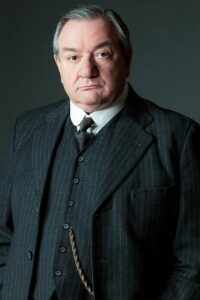
Mr Birling represents capitalist values, self-interest, and complacency. He is proud of his social position, dismissive of the working class, and confident in his opinions — even when they are clearly flawed.
“A man has to mind his own business and look after himself and his own.”
This quote sums up his individualistic worldview, which Priestley challenges throughout the play. Through Birling’s dramatic irony (e.g. claiming the Titanic is unsinkable), Priestley positions him as out of touch and morally limited. He refuses to accept responsibility for Eva’s death, even after hearing everyone else’s confessions. He is used to highlight the danger of social arrogance and the failure to learn from experience.
Mrs Sybil Birling

“I did nothing I’m ashamed of.”
This line summarises her refusal to learn from the Inspector’s visit. She believes her social status makes her morally superior, yet condemns Eva based on class and personal prejudice. Her dismissal of the Inspector’s message highlights Priestley’s criticism of the upper class and their failure to show empathy or accept blame. Mrs Birling remains unchanged at the end of the play, providing a sharp contrast to her daughter.
Sheila Birling

“But these girls aren’t cheap labour – they’re people.”
This marks the start of her moral awakening. Sheila comes to accept responsibility and questions her family’s values. By the end of the play, she challenges their refusal to change and becomes aligned with the Inspector’s message. Priestley uses her as a symbol of hope — the possibility that the younger generation can learn, reflect, and do better.
Eric Birling

“We all helped to kill her.”
This simple but powerful line shows Eric’s full acceptance of moral guilt. He represents a younger generation that, while flawed, has the potential for growth. His emotional breakdown also stands in stark contrast to his parents’ cold detachment. Priestley uses Eric’s confession and remorse to show that social change is possible — but only if people take responsibility for their actions.
Inspector Goole

“We are members of one body. We are responsible for each other.”
This line captures his central message. The Inspector doesn’t focus on legal guilt, but on moral responsibility. His methodical approach builds tension and drama, while his mysterious disappearance at the end adds to his symbolic power. He may not be a ‘real’ inspector, but his role in the play is clear: to challenge selfishness and highlight the need for collective social awareness.
Note: All character images are from the BBC production of An Inspector Calls
AO1 and AO2: Writing About Characters in the Exam
To write strong responses about characters in your exam, aim to balance what happens (AO1) with how it’s presented (AO2).
Here’s a useful structure you can follow:
- AO1 – Identify the character’s role, actions, or change
- AO2 – Explain Priestley’s methods (language, form, structure)
- Link to Theme – Show how the character reflects an idea like responsibility, class, or generational conflict
Example:
Priestley presents Sheila as a character who changes significantly throughout the play. When she says, “I know I’m to blame – and I’m desperately sorry,” the use of emotive language shows her acceptance of guilt. This contrasts with her parents and supports Priestley’s theme of social responsibility.
Developing Strong Character Responses
Getting to know the characters in An Inspector Calls will help you write with more clarity and insight in your exam. Each character has a specific role in the structure of the play, and Priestley uses their actions, attitudes and development to communicate key ideas about responsibility, class and social change.
As you revise, focus on the details that reveal how a character is presented — what they say, how they change, and how the audience is meant to respond. Connect this to the wider themes of the play, and use carefully chosen quotes to support your points.
With a little practice, you’ll be able to write clearly about characters and explain how Priestley uses them to shape meaning and influence the audience. See how well you can identify main and supporting characters you’ll need to write about in previously asked exam questions. See the full compilation of Past Exam Questions An Inspector Calls here.
Want the Full Character Breakdown?
Our An Inspector Calls Revision Guide contains:
- Detailed profiles of every major character
- Symbolic roles, key moments, and quote analysis
- Practice questions for each character with planning tips
- Sentence frames and revision checklists for AO1 and AO2
You can find more information about our An Inspector Calls Revision Guide and other free resources on our An Inspector Calls: Revision Resources Page.
